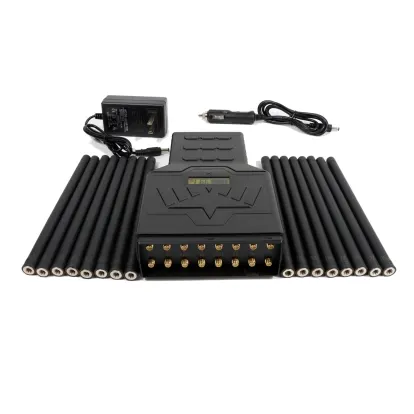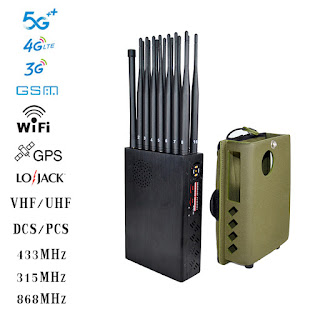The factors that impede the transmission of Wi-Fi signals
A WiFi and bluetooth jammer Can Prevent Data Theft
It is important to understand that WiFi is available in 2 frequencies, 2.4GHz and 5GHz. While 2.4GHz is by far the most commonly used, some newer routers do include 5GHz.
Bluetooth is within the 2.4GHz band, so any WiFi jammer that covers 2.4GHz is also going to block Bluetooth.

The next important consideration is the size of the coverage area needed for your application. We offer units such as which covers both 2.4GHz and 5GHz to approximately 15 meters, the popular spy camera jammer which covers 2.4GHz WiFi only to approximately 20 meters, or the extremely powerful TSJ-WiFi-5GH which covers both, up to 250 meters.
There are some variations in the coverage area depending upon local signal strength, physical environment, etc. Where the signal is weaker, the coverage is greater, and vice versa.
How Far Should WiFi Reach?
The range of the WiFi signal may differ due to various factors, such as the frequency range, signal strength, and the presence of walls or obstacles between your jamming device and the router.
The 2.4 GHz frequency band offers improved device coverage, albeit at a reduced speed. Conversely, the 5 GHz frequency band provides faster speeds but has a limited range, thereby optimizing your network's performance.
The range of a standard WiFi router typically extends up to 100 feet indoors and up to 300 feet outdoors in open spaces. Nevertheless, the presence of other devices or materials can cause interference, leading to a notable reduction in this range.
Signal Disturbances and Interference
The WiFi signal enables the connection of your devices to the internet by utilizing a frequency range (2.4GHz or 5GHz) that propagates through the air. Opting for newer equipment that supports the 5 GHz frequency band is crucial due to the shorter range of signals in this band, reducing the likelihood of interference from other networks compared to older equipment operating on the 2.4 GHz band.
Metal
Metal is the primary material that will significantly weaken your WiFi signal. As an exceptional conductor of electricity, it has the ability to bounce back WiFi signals, resulting in buffering while streaming or videoconferencing, delays during gaming, and irritatingly sluggish loading times.
Walls (Concrete & Brick)
The ability of walls to impede WiFi signals is contingent upon several factors, such as the composition and thickness of the wall material.
WiFi signals often face difficulties in penetrating concrete and brick walls. Among the two, concrete walls pose a greater challenge as they have a higher density and thicker mass, making them more effective at blocking WiFi signals compared to brick walls.
Windows, Glass & Mirrors
It’s generally not recommended to place your router next to a window or a mirror, either. WiFi signals can’t pass through windows, glass, and mirrors because these materials contain a thin layer of metal that reflects the radio waves back instead of allowing them to pass through.


Comments
Post a Comment